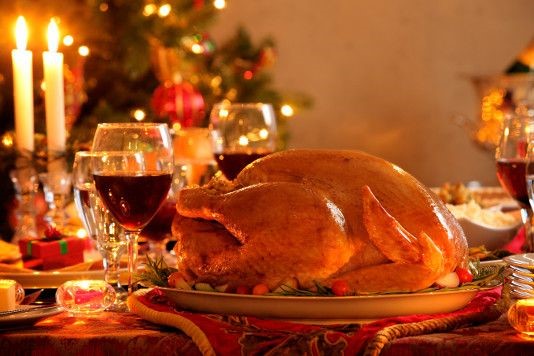Talking Turkey

There's absolutely no excuse for dry, crumbly, tasteless slivers of a sadly-neglected once-a-year bird. If you choose it with care and cook it with care, a turkey's for anytime, not just for Christmas.
Advent is upon us and as the clock ticks down towards Christmas, it’s not hard to rejoice in and mourn in equal measure the life of the creature that has come to represent nourishment on the big day itself: that much maligned, much mistreated, often appallingly cooked bird, the turkey. Let’s face it, whether you’re religious or secular, the other staple around which we all gather, a be-tinselled and enbaubled fir tree, is a damn sight prettier to look at, dead or alive.
87% of us Brits expect to eat turkey on the day and 10 million of the birds are sold over the festive period. You can only imagine the range of sizes, breeds, quality and - let’s face it - farming environments.
But despite the horrendous jumpers and neckwear we give and receive, regardless of the grotesque amounts spent on flimsy bits of plastic tat we press lovingly into our children’s grasping paws, we really ought to have a responsibility for the food we shovel into ourselves on Christmas Day. And sometimes, with a tiny bit of planning, preparation and patience, we get it absolutely right; the kitchen is filled with a warm enveloping scent of something that somehow - for one day in the whole year - transcends even a Bresse chicken for making you dribble in anticipation.
Of the turkeys brought to the British Christmas table, the two most celebrated and salivated over are the Norfolk Black and the Bronze. But there is a whole kaleidoscope of breeds to choose from, from your standard white turkey, through to a Bourbon Red, a Blue, a Buff, a Pied, a Slate and the delicious, if slightly camply named Lavender, together with the exotic sounding Narragansett, the breed that still prefers to fly and roost in trees. If only to escape the teasing it gets for a name like that.
Clearly though, quality isn’t guaranteed simply by breed. Rearing, feed, age and hanging are all essential concerns and the absence of quality in just one of them will threaten the quality of the meat on your plate.
If you are used to feeding a horde of an extended family, you’re looking at a bird weighing in at a punchy 7–10kg. Not only is that going to need to hang for quite a while to usher in its full flavour, but you’ll also need to start the cooking at breakfast time, while everyone else is opening their stockings.
There are also a number of different ways of cooking these fowl friends. There is a temptation to fill the poor thing with all your lovingly prepared stuffings. This slows down the cooking process and risks drawing moisture away from the meat. Alternatively, try cooking the stuffings separately and the turkey breast-down for the best part of its time in the oven; this lets the fat run down and baste the breast. Flip it over for the last 30 minutes to brown the skin and crisp it up.
The most luxuriantly, extravagantly roasted turkey I’ve ever sat in front of was one that my mother-in-law had smothered in butter then sewn into its own thin muslin shroud. Thanks be to all the small gods of poultry for that one.
In short, there’s absolutely no excuse for dry, crumbly, tasteless slivers of a sadly-neglected once-a-year bird. If you choose it with care and cook it with care, a turkey’s for anytime, not just for Christmas.
Also worth your attention:
Comments
Be the first to comment
Do you want to comment on this article? You need to be signed in for this feature